Evolution of Rollups on Bitcoin
Lets see the Bitcoin Roadmap from 2013 to Now,
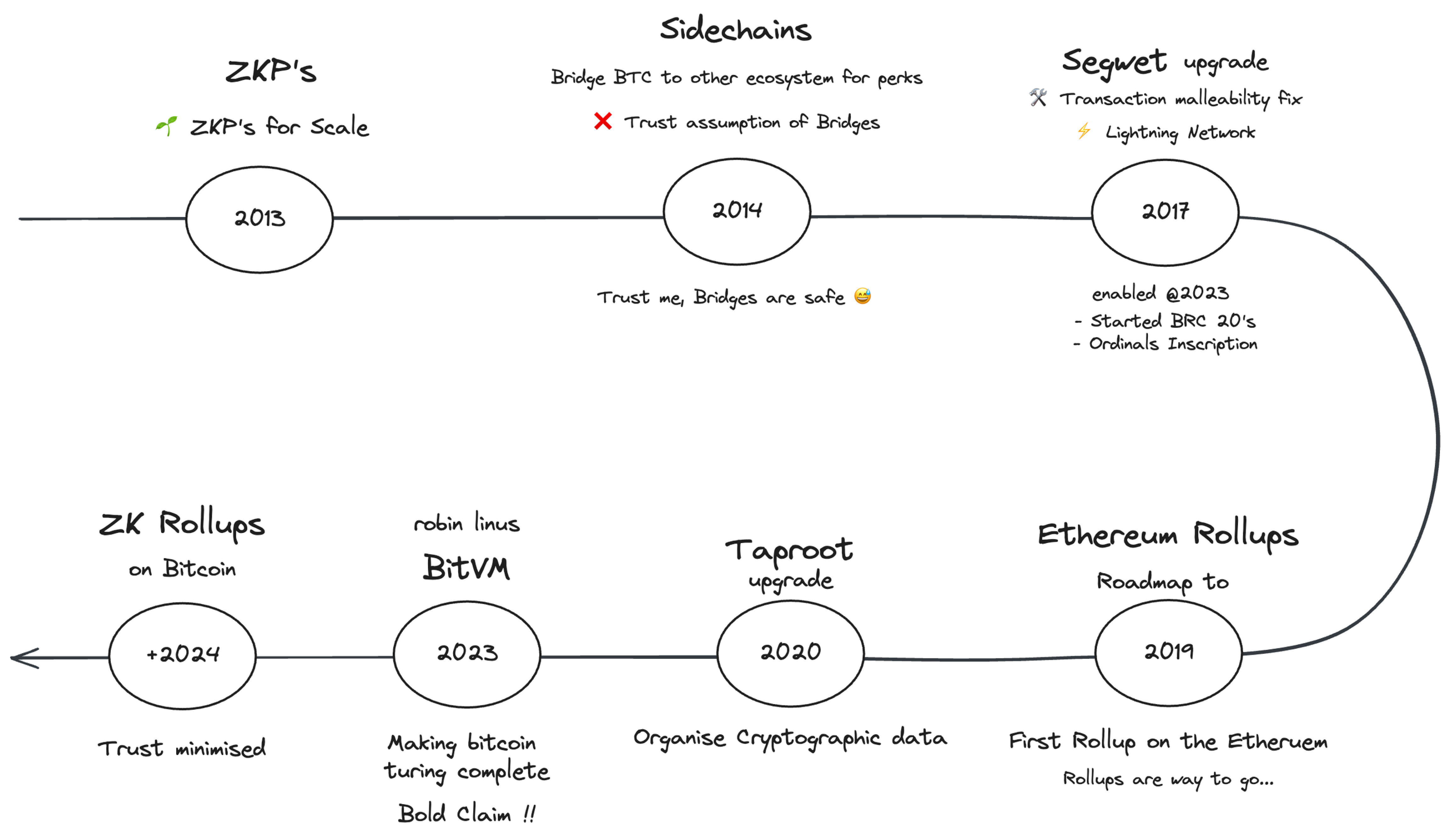
ZK Rollups are a layer-2 scaling solution that perform transaction execution outside the main blockchain (layer-1) while maintaining data integrity and security through proofs.
Zero-Knowledge Proofs (ZKPs), Segregated Witness (SegWit), Blockchain Bridges collectively lay the groundwork for implementing ZK Rollups on Bitcoin.
Trust-Minimized Rollups
Lets Understand, How can we build a trust-minimised Rollup using ZK
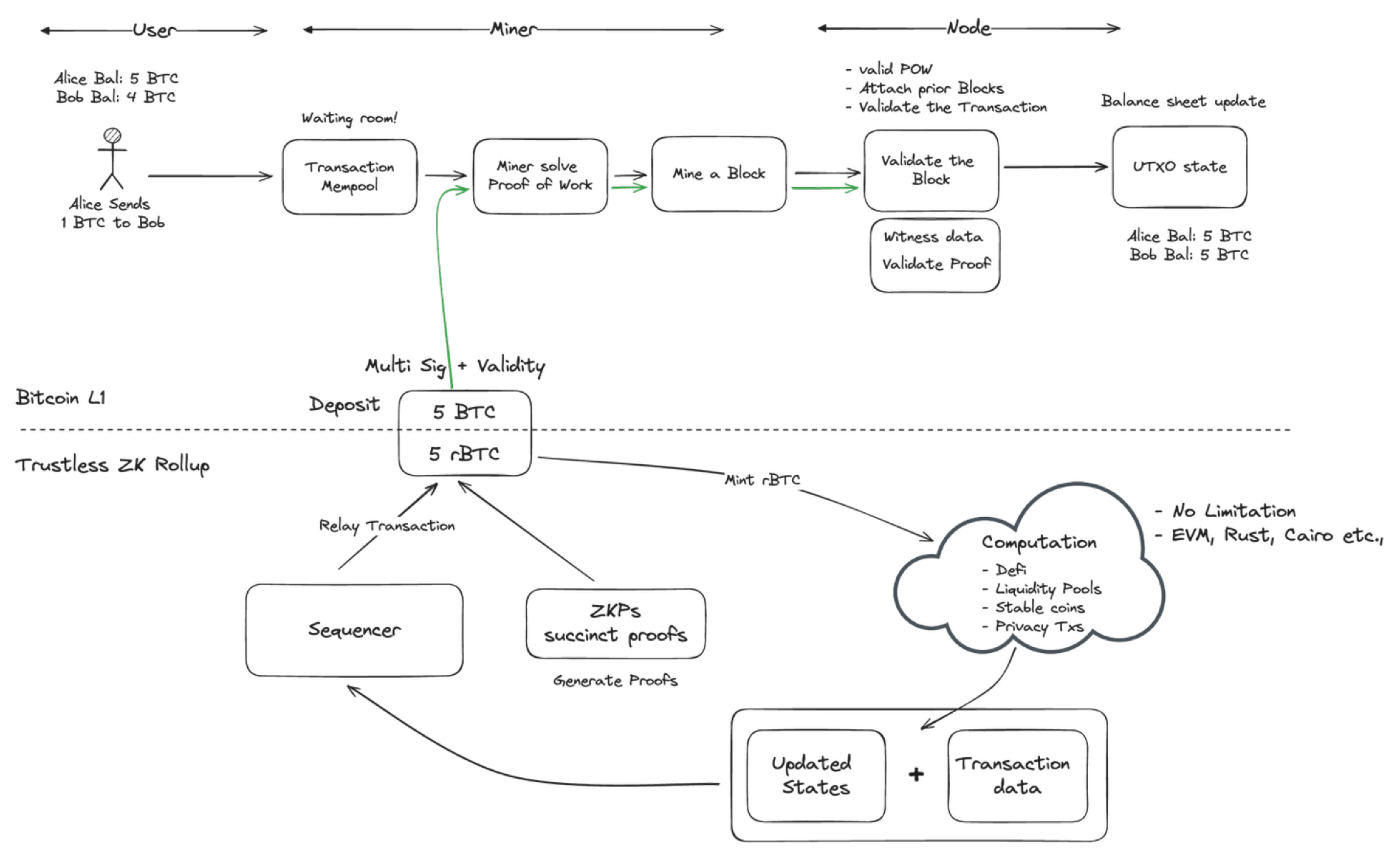
Main Limitations
-
Bitcoin Cannot Verify the ZK Proof by Design
-
UTXO Model Constraints - Validity on Multi Sig
Bitcoin Rollups
BitVM whitepaper made things interesting by showing the ways for ZK proof verifications within the Bitcoin ecosystem with "1 / n trust assumptions", paving the way for enhanced scalability and security.
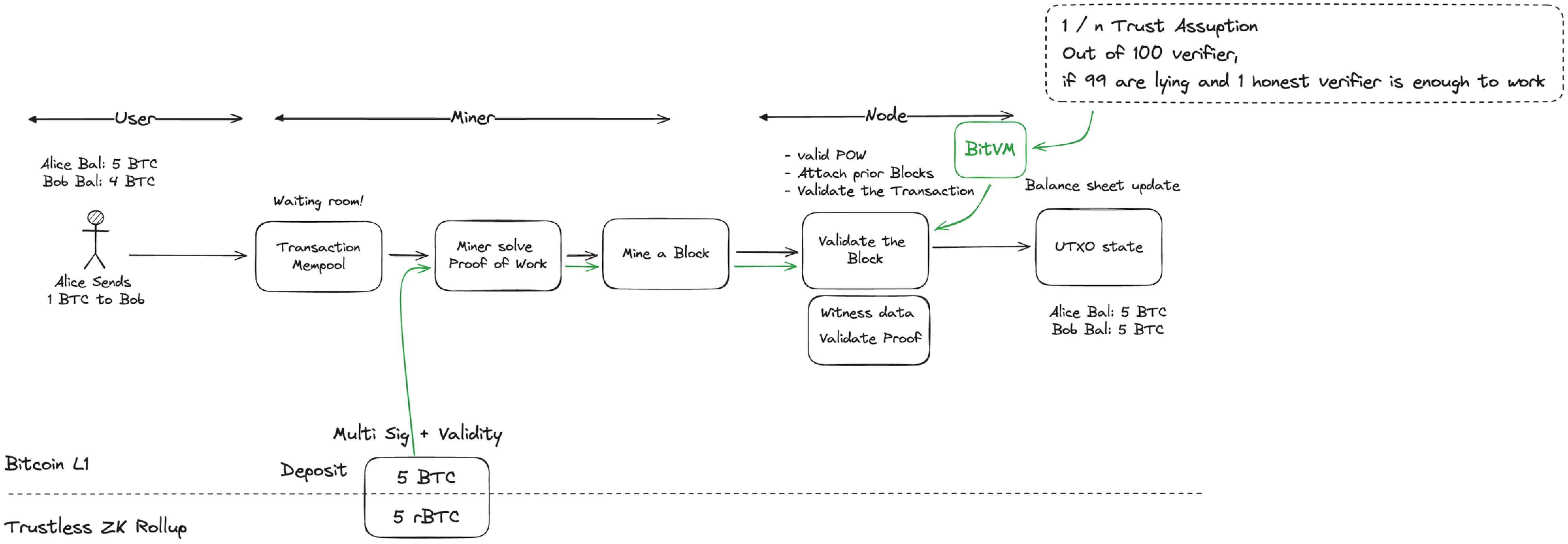
Limitations
-
Dishonest Sequencer
-
Data Availability Layer
If Sequencer goes rogue, Shared Sequencer Can we be a one of the solution but data should be available, for which introducing Data availability layers is required
With Data Availability Layer,
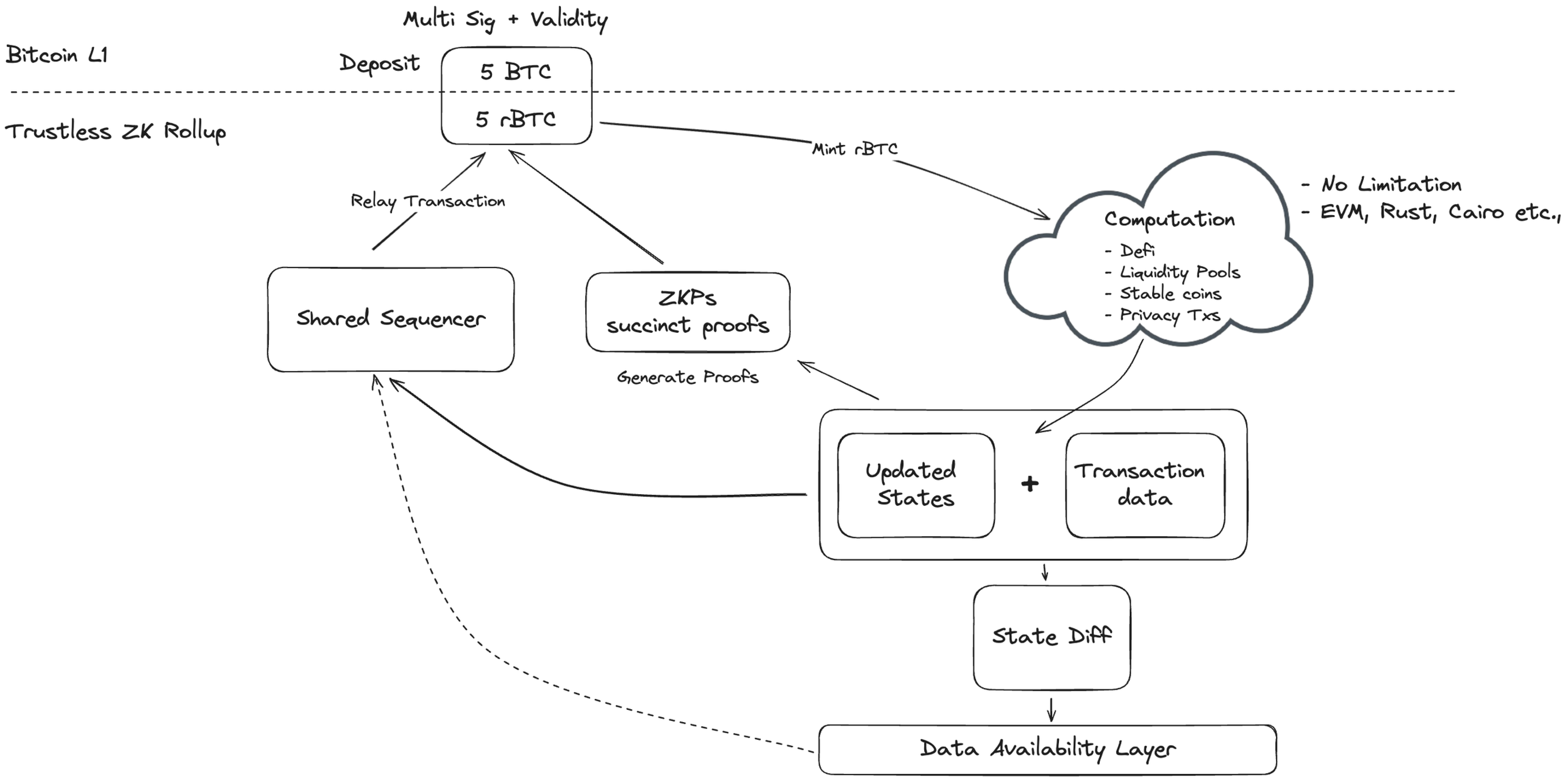
Inspiration from Validium, Sovereign Rollups
Data availability can be posted anywhere off chain for
-
Cheaper Transactions
-
Scalable Transactions
It can be posted on the any DA layers,
-
Celestia DA
-
Bitcoin DA
-
Other DA Layers.
Limitations with this, How can they cross compose and share liquidity ?
But this can solved with the ZKPs which allows the Interactions with all the DA layers can be trustless allowing cross compute and shared liquidity
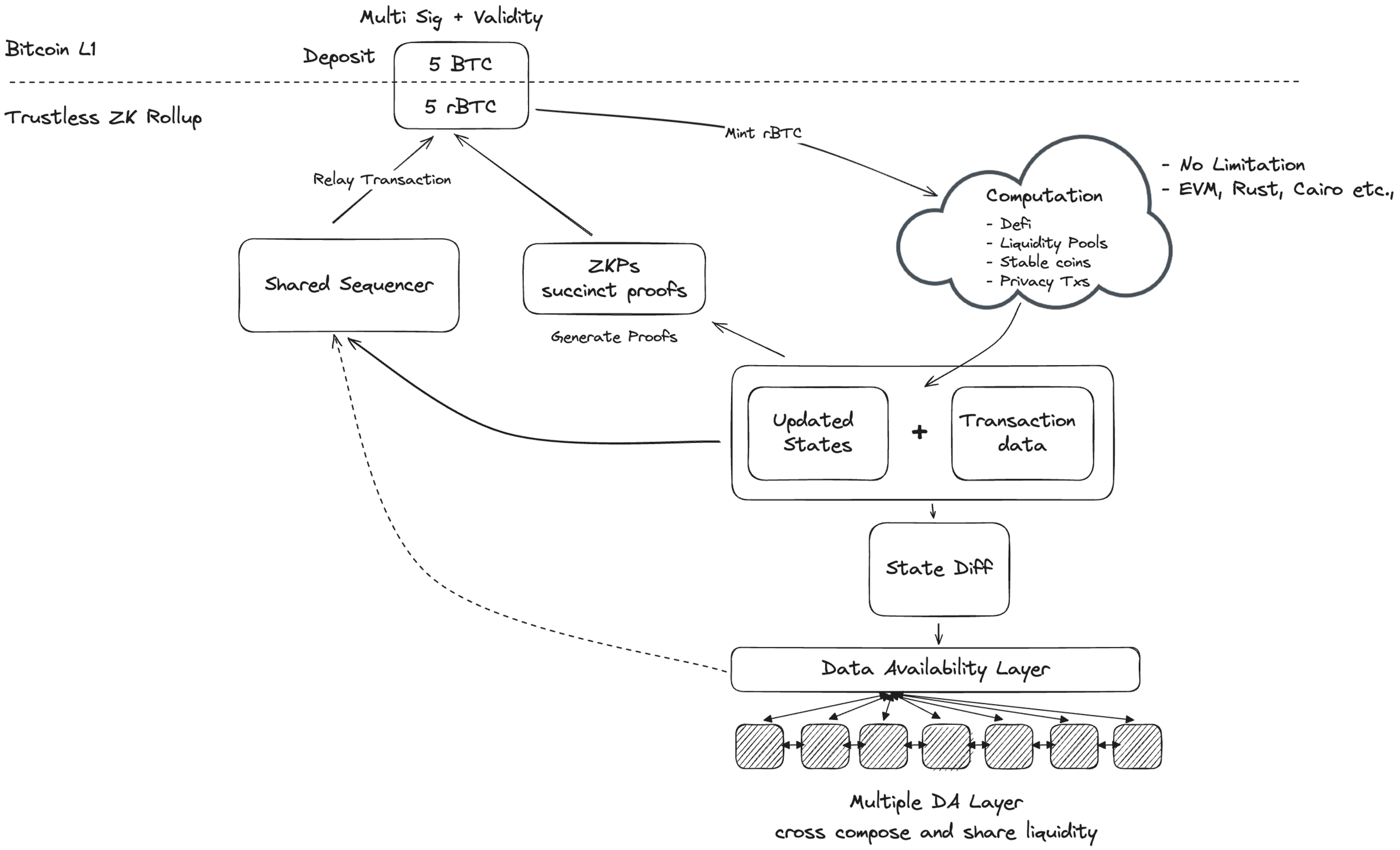
Challenges in building Rollups on Bitcoin
Non-Turing completeness
Bitcoin's non-Turing complete nature limited its utility, only shifted after Ordinals
No Existing Frameworks
The absence of established frameworks on Bitcoin for rollup development has been a significant barrier
Complex Development
Missing familiar tech stacks, increasing the complexity to create rollup on Bitcoin.
Skepticism around Trust Assumptions
Skepticism from the Community due to Trust Assumptions in the rollup solutions

